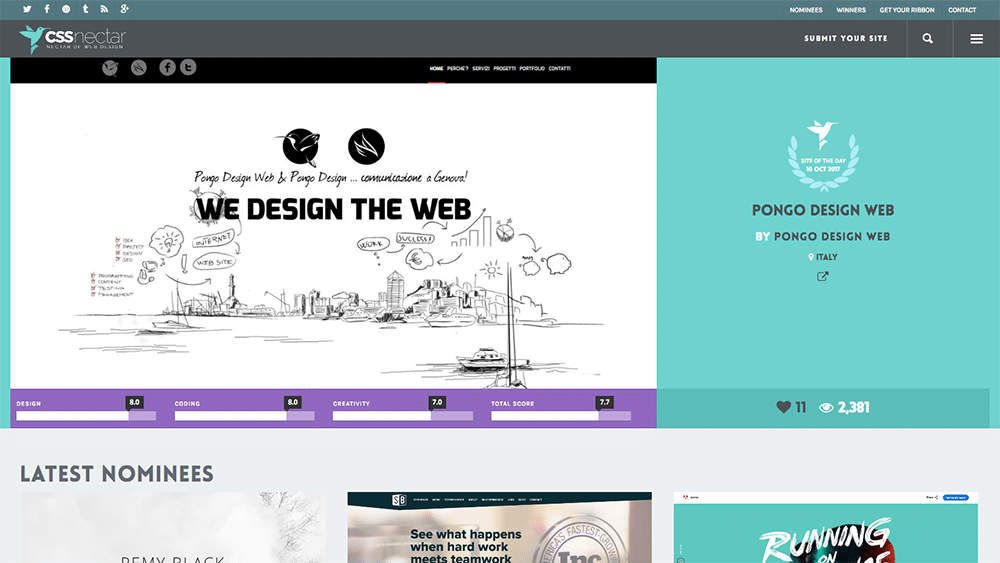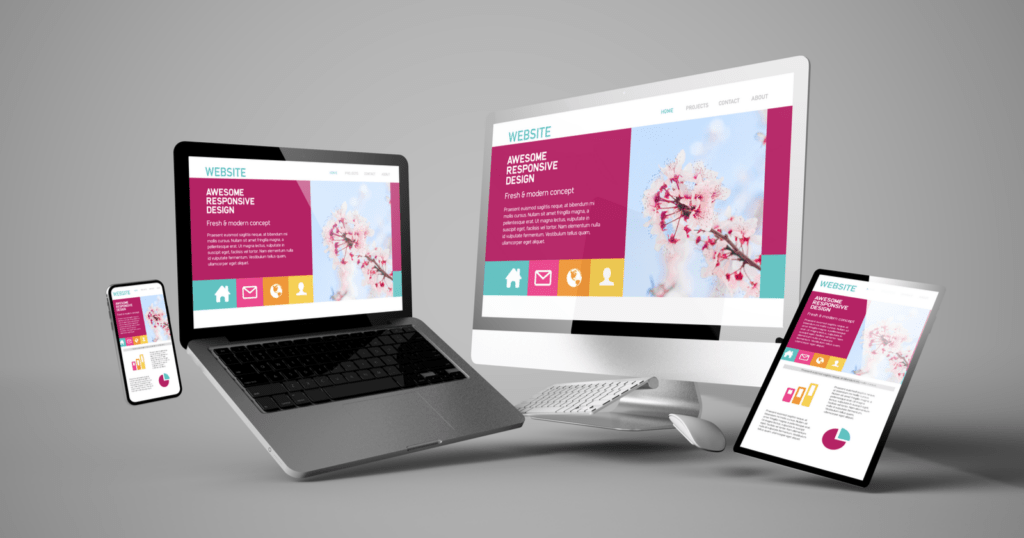How to Improve Your Website Design for Better Conversion Rates
How to Improve Your Website Design for Better Conversion Rates
Blog Article
Modern Web Site Design That Captures Attention and Converts
In an increasingly digital landscape, modern-day web site layout has arised as an essential factor in recording customer interest and driving conversions. As we check out these essential parts, it comes to be clear that understanding their interaction can dramatically impact a website's performance and customer satisfaction.
Significance of Visual Pecking Order
Visual power structure is a vital component in website style, as it overviews customers' attention and improves their total experience. By strategically arranging content, developers can direct individuals to the most vital details first, thereby raising interaction and improving usability. Effective visual power structure utilizes different techniques, including dimension, comparison, spacing, and shade. Larger components naturally draw the eye, while contrasting shades can emphasize vital messages, making them stand apart among even more subdued components.
Including a logical circulation in web content plan is crucial; for circumstances, placing one of the most essential info on top of a web page fosters instant recognition. Furthermore, regular use typography, such as differing font dimensions and styles, assists establish a clear web content structure. This company not only aids in navigation yet also develops trust, as users feel more comfortable when they can easily discover what they are looking for.
Inevitably, a well-executed visual pecking order not only improves visual appeal however also considerably affects individual behavior. By focusing on crucial aspects and making certain a seamless experience, developers can effectively convert visitors into consumers, strengthening the importance of this foundational design concept in modern web site development.
Responsive Layout for All Instruments
Developing a seamless experience throughout different tools is necessary in today's electronic landscape, where users accessibility sites from tablets, smart devices, and desktops alike. Receptive style is an essential technique that makes sure web sites adjust fluidly to different screen resolutions, alignments, and dimensions. By utilizing flexible grids, images, and CSS media inquiries, developers can produce designs that keep aesthetic stability and functionality, regardless of the device being used.
The importance of responsive layout prolongs past appearances; it directly affects customer interaction and conversion rates. A site that operates well on all devices motivates longer brows through and lowers bounce rates, as users are most likely to engage with web content that is simple to browse. Search engines, particularly Google, focus on mobile-friendly websites in their rankings, making receptive design a vital component of search engine optimization (SEARCH ENGINE OPTIMIZATION)
Incorporating receptive style not only boosts customer experience yet additionally streamlines the development process. By creating a single website that works across gadgets, businesses can conserve time and sources compared to establishing different mobile and desktop computer variations. Eventually, receptive design is an essential strategy for contemporary web site design, guaranteeing ease of access and fulfillment for all users, regardless of their tool.
Involving Interactive Components
While a receptive layout prepares for a useful website, integrating appealing interactive components is critical for recording customer interest and cultivating deeper connections. Website Design. Interactive aspects, such as computer animations, tests, and clickable infographics, develop a more dynamic individual experience, motivating visitors to spend even more time on the site
Including interactive functions can additionally lead customers via complex information, making it easier to digest material. Interactive sliders can highlight product variants, while embedded videos can offer demonstrations or endorsements that resonate more than fixed pictures or message. In addition, gamification methods, like rewards for involving or completing jobs with web content, can improve individual inspiration and retention.
Efficient use of interactive components not just improves the click for info customer experience but can additionally lead to higher conversion prices. It is important to stabilize have a peek here interactivity with performance; overly complicated functions may impede website rate, negatively influencing user contentment.
Structured Navigation Practices
Effective navigation is a keystone of any kind of effective web site, as it directly affects customer experience and material availability. Streamlined navigating techniques make sure that individuals can easily locate details, enhancing their communication with the site. A well-structured navigating menu must be straightforward and instinctive, normally featuring a limited number of primary categories to prevent overwhelming visitors.
To attain streamlined navigating, developers ought to focus on a hierarchical structure that practically organizes web content. Executing breadcrumb trails can offer individuals with context about their current place within the website, enabling smooth backtracking. Furthermore, making use of drop-down menus can successfully conserve room while still offering access to subcategories.
Responsive style is vital, as navigating needs to be practical across all gadgets (Website Design). Mobile individuals, in particular, take advantage of touch-friendly food selections and retractable areas that maintain usability without endangering aesthetic appeals

Efficient Call-to-Action Approaches
A well-crafted call-to-action (CTA) is essential for directing individuals toward desired end results on a website, as it motivates them click to involve with content or purchase. To optimize their performance, CTAs must be clear, compelling, and tactically positioned throughout the site.
First, utilize action-oriented language that connects urgency or worth, such as "Obtain Started," "Join Now," or "Insurance claim Your Discount rate." This language not just encourages individuals yet also establishes clear assumptions about the following actions.
Second, think about layout aspects; CTAs ought to attract attention visually with contrasting colors, enough whitespace, and prominent positioning. A switch that is very easy to see and click boosts the possibility of customer communication.
In addition, personalizing CTAs based upon individual behavior or demographics can dramatically improve engagement. Tailored messages reverberate more with users, driving higher conversion prices.

Verdict
These components collectively boost user experience, making certain that visitors stay engaged and motivated to discover content even more. By prioritizing these design principles, businesses can considerably boost user retention and conversion rates, ultimately leading to higher success in the electronic landscape.
In a significantly digital landscape, modern-day web site layout has actually emerged as an essential factor in catching user focus and driving conversions.Visual pecking order is a vital component in website design, as it guides customers' focus and improves their total experience.The significance of receptive layout expands past looks; it directly affects user interaction and conversion prices.Integrating receptive design not just enhances customer experience yet additionally streamlines the advancement procedure. Eventually, responsive design is a fundamental technique for contemporary web site design, ensuring accessibility and contentment for all individuals, no matter of their tool.
Report this page